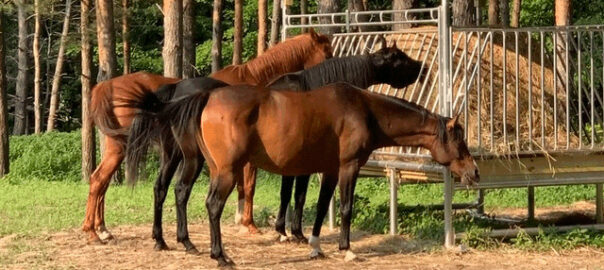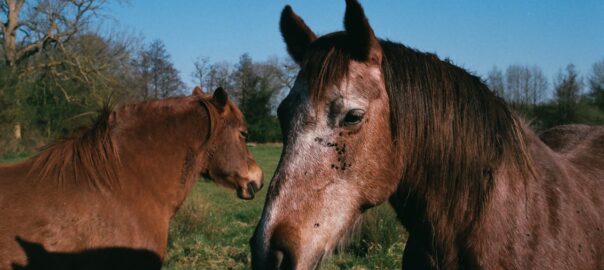Those hot summer days are approaching and it’s important you know how to properly care for your horse when temperatures near triple digits. Neglecting to do some of these tips could not only be extremely uncomfortable for your horse but also cause some serious health concerns.
Here are some of the best tips for keeping your horse cool and comfortable during those hot summer months:
1. Quality Horse Shelter Kits
On those brutal summer days, any kind of shade is a relief for your horse. Besides drinking water, shelter is the most important aspect of caring for your horse in the summer. Trees with large foliage can be great for a quick rest but if the heat is too much, quality horse shelter kits are great for keeping horses cool, comfortable, and out of the heat.
Make sure you’re taking the sun’s positioning into account so that your horse can always have protection from the sun. To maximize comfort inside these horse shelter kits, place fans, light sheets, and a cool water source.
2. Never Overdo it in the Heat
According to the University of Guelph, horses can get heat stress 10 times faster than humans during a workout.
If you’re going out riding, especially during the middle of the day, be sure to keep the session short. You should never push your horse beyond his or her fitness level, but it’s imperative to be extra cautious during extremely hot days.
3. Keep Them Hydrated and Well-Fed
It’s crucial your horse remains strong throughout those hot summer days. Keeping your horse hydrated and well-fed will ensure they’re getting enough nutrients and will be able to better manage excessive temperatures.
Provide cool water and make sure your horse is drinking it. If they’re refusing, try placing a block of salt nearby (horses love it) – that should encourage them to rehydrate afterward. Also, make sure you’re using quality square or round bale feeders. Certain horse hay feeders are great for helping your horse eat freely, preventing overeating and other issues.
4. Frequent Baths, Mist, and Fans
Though providing frequent drinking water breaks during the summer is crucial, keeping your horse cool with baths, mist, and fans is just as important. After your (brief) ride, consider spraying your horse with a cool hose to help.
When misting or bathing your horse, it’s recommended to start with the chest and neck areas to cool the veins near the heart, which can help cool off the rest of the body quicker.
5. Trim Any Excess Hair
Although clipping horses is most common in the winter because of the extra layers of coat, keeping them well-groomed in the summer is a great way to help them stay cool. Removing sections of your horse’s coat can reduce sweating during exercise and keep them comfortable throughout the day. Make sure you’re using quality clippers, too. Use clippers that can remove hair underneath the tact, which prevents irritation and constant rubbing.
6. Pay Attention to Signs of Heatstroke
Overall, make sure you’re paying attention to your horse’s mood, appearance, and movements as much as you can when it’s extremely hot. Give your vet a call right away if you notice any of the following signs of heatstroke:
- Elevated heart rate
- Temperatures above 103 degrees
- Exhaustion or lethargy
- Excessive sweating
- Dehydration
Make sure you’re prepared for the heat. Contact us today if you want to find some great horse shelter kits, round bale feeders, and more!




